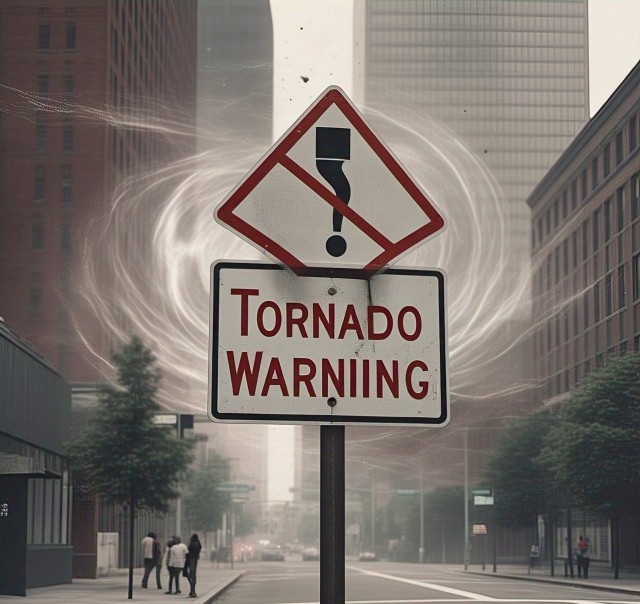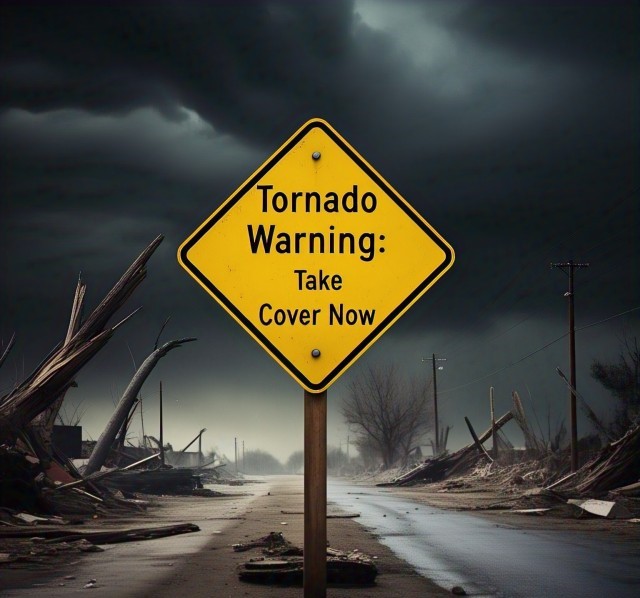
Understand what a tornado warning really means, how it differs from a watch, and what to do to stay safe during severe weather. Stay prepared and informed.
Tornado Warning: What It Really Means & How to Stay Safe
Imagine this: you’re watching your favorite show when a loud siren pierces the calm. Your phone buzzes with an emergency alert. You glance down and see the words: “Tornado Warning in your area. Seek refuge at once. Your pulse quickens.. What does that really mean? Is it too late to act?
In this post, we’ll demystify the term “tornado warning,” explain how it differs from other alerts, and provide essential safety tips based on real experiences and expert advice. Whether you’re in the heart of Tornado Alley or a place with rare tornado occurrences, understanding what a tornado warning truly signifies could save your life.
Tornado Warning vs. Tornado Watch: Know the Difference
Before diving into what a tornado warning means, let’s clarify the often-confused terms: tornado watch and tornado warning.
| Alert Type | Meaning | What You Should Do |
|---|---|---|
| Tornado Watch | The weather is conducive to the formation of a tornado. | Stay alert, review safety plans. |
| Tornado Warning | A tornado has been observed or detected by meteorological radar. | Take immediate shelter. |
A tornado warning means danger is imminent.The National Weather Service (NWS) issues this alert when a tornado is verified either by direct observation or through Doppler radar detection.. It’s your cue to act now—not in 5 minutes.
Why Tornado Warnings Matter More Than You Think
One common misconception is that tornadoes are rare or will always “miss” your neighborhood. However, the U.S. experiences an average of 1,000 tornadoes annually, and they can strike unexpectedly.
Personal Story: A Close Call in Oklahoma
I’ll never forget the night a tornado warning interrupted dinner at my cousin’s home in Norman, Oklahoma. We dismissed it at first—just another false alarm, we thought.Ten minutes later, the wind howled with the intensity of a speeding locomotive.
We scrambled into the storm cellar just in time. The twister passed a mile away, shredding rooftops and toppling trees.
It was a stark reminder: tornado alerts are not mere recommendations.
They are urgent.
Key Takeaways
- Warnings often offer just minutes of lead time.
- Not all tornadoes are visible—especially at night or during rain.
- Radar-detected tornadoes can be just as deadly as those spotted visually.
What Triggers a Tornado Warning?
The NWS uses advanced Doppler radar, storm spotters, and emergency reports to determine whether to issue a warning. Key triggers include:
- Detection of a tornado debris signature (TDS) on radar.
- Eyewitness reports from trained storm spotters.
- Wind rotation patterns that indicate imminent formation.
Once issued, tornado warnings are communicated through:
- Wireless Emergency Alerts (WEA) on smartphones
- NOAA Weather Radio
- Local news channels
- Sirens in some communities
Read more about how the NWS issues warnings.

How to Protect Yourself During a Tornado Alert
When a tornado alert is announced, every moment is critical.. Here’s what you should do:
1. Take Shelter Immediately
- Head to the lowest floor of your residence, ideally a basement.
- If no basement, seek a small, windowless interior room (like a bathroom or closet).
- Keep a distance from windows, entryways, and exterior walls.
- Protect your head and neck with blankets, helmets, or even couch cushions.
2. Have a Go-Bag Ready
Keep essentials in a waterproof bag you can grab quickly:
- Flashlight and extra batteries
- First-aid kit
- Medications
- Water and snacks
- Important documents
3. Listen to Updates
Use a battery-powered weather radio or app to get real-time updates. Avoid relying solely on power-dependent sources like cable or internet.
Tornado Warnings: Urban Myths vs. Reality
Let’s bust some dangerous myths:
Myth 1: Tornadoes can’t hit cities.
- Reality: Tornadoes can—and have—hit major urban centers like Nashville and Dallas.
Myth 2: You should open windows to equalize pressure.
- Reality: This wastes valuable time and offers no protection.
Myth 3: Hiding under a highway overpass is safe.
- Reality: Overpasses can create wind tunnels and increase your risk of injury.
For a complete list of tornado myths, check out this FEMA resource.
Tornado Warning Trends & Future Improvements
Weather technology has improved drastically, increasing both the accuracy and lead time of tornado warnings. According to NOAA, lead time has grown from an average of 5 minutes in the 1980s to nearly 13 minutes today.
Additionally, efforts are underway to personalize warnings based on precise locations through polygon-based alerts, reducing false alarms and increasing public trust.
The Role of AI and Machine Learning
Cutting-edge projects like the Warn-on-Forecast system are using artificial intelligence to predict tornadoes hours in advance.This could significantly impact communities that currently receive only a brief warning.
How to Prepare Before the Next Tornado Warning
Don’t wait for a siren to start preparing. Here’s how to be proactive:
Create a Tornado Plan
- Identify your shelter area.
- Practice drills with family members.
- Assign roles (e.g., who grabs the go-bag or checks on pets).
Sign Up for Alerts
- Use apps like the FEMA app or AccuWeather.
- Enable WEA alerts on your phone.
Strengthen Your Home
- Anchor heavy furniture.
- Install storm shutters or impact-resistant windows.
- Consider a FEMA-approved safe room.
Conclusion: Stay Aware, Stay Alive
A tornado warning isn’t just a technical term—it’s a life-saving alert that demands immediate action. Knowing the distinction between a watch and a warning, preparing a strategy, and keeping updated can determine whether you face disorder or ensure your safety.
If there’s one takeaway from this guide, it’s this: don’t treat a tornado warning casually. Respect it, act on it, and prepare in advance.
Ready to Be Storm-Smart?
👉 Share your own tornado experience in the comments. 👉 Check out our Ultimate Emergency Preparedness Checklist. 👉 Subscribe to our newsletter for more weather safety tips.
Stay safe out there—and when the warning hits, don’t wait. Take shelter. Now.

